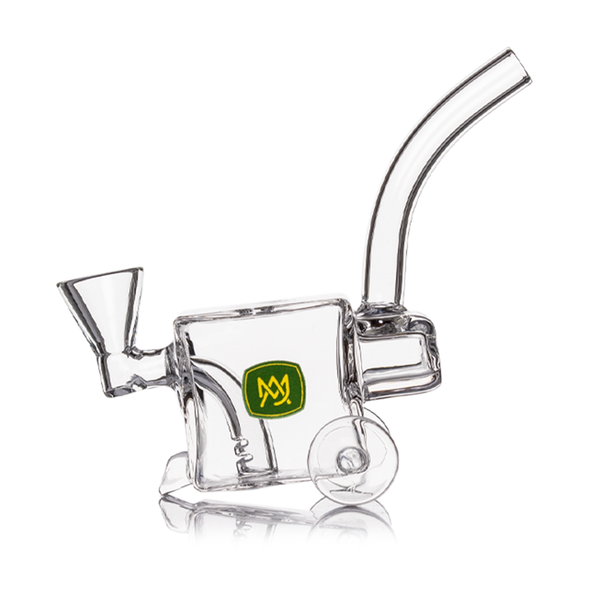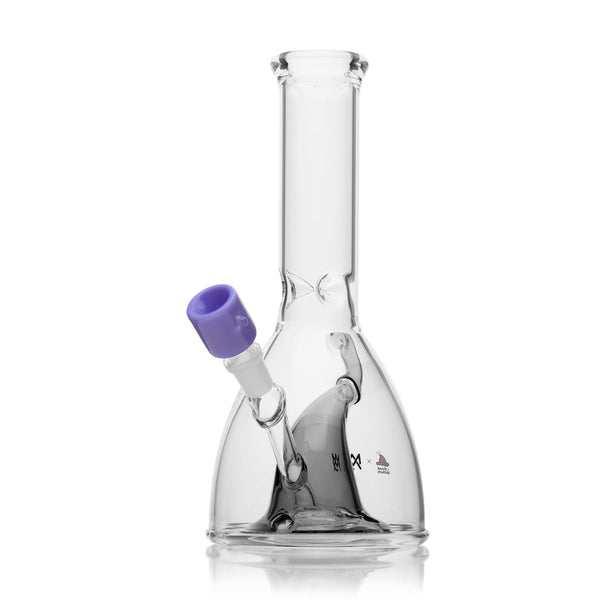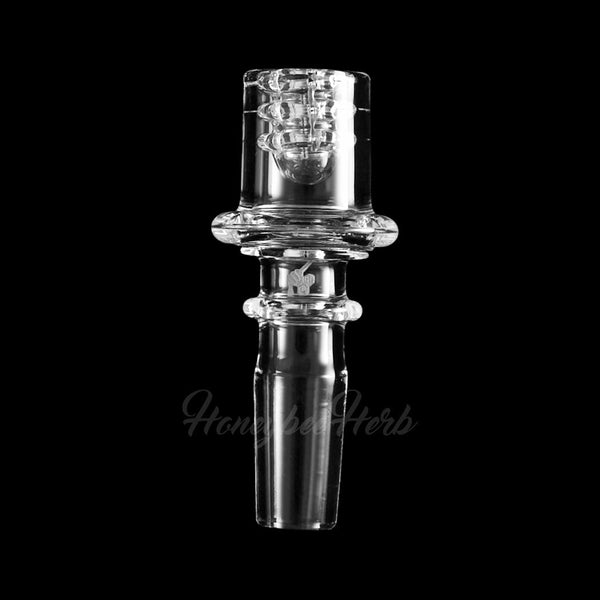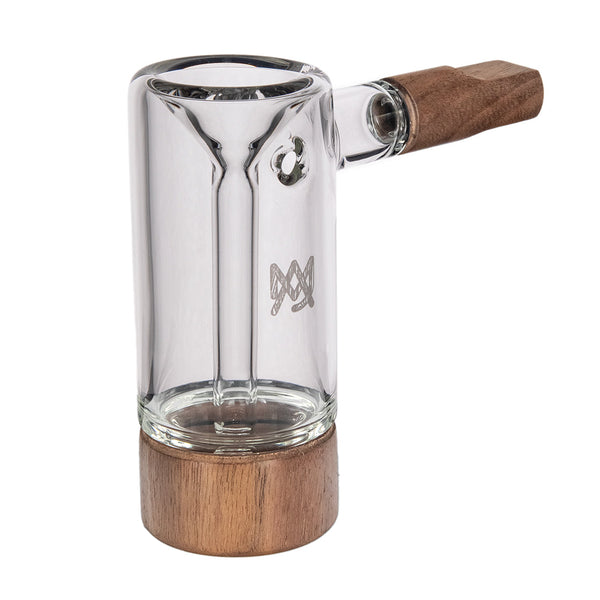Dank and Durable: Why Borosilicate Glass is a Stoner's Best Friend

When it comes to glass, not all types are created equal. One very special type of glass you might have heard of is borosilicate glass, and it's pretty amazing. Let's dive into what makes it so remarkable and why it's used in various applications.
When you think of glass, you might not realize that there are various types crafted from different ingredients. One of the common glass varieties you come across is referred to as "soda-lime" glass. It's a common, everyday glass that contains approximately 70% silica. Interestingly, the silica used in this type of glass often originates from sand. In the past, glass production was often centered in areas blessed with ample sand resources.
We’re about to get a little bit technical here (okay, downright nerdy – but in a cool way).
Borosilicate glass is made up of two main ingredients: silica (SiO2) and boron oxide (B2O3). These ingredients come together to create a sturdy glass structure. Typically, borosilicate glass contains around 70-80% silica, 7-13% boron oxide, 4-8% sodium oxide or potassium oxide, and 2-8% aluminum oxide. This unique blend gives borosilicate glass its remarkable properties.
Now, there are two main types of borosilicate glass based on their boron oxide content. The first is low-borate borosilicate glass, which contains 7-13% boron oxide. This type is commonly used to make laboratory-grade apparatus. The second type is high-borate borosilicate glass, which contains 15-25% boron oxide. It’s also known as leachable alkali-borosilicate glass. This type can be used for chromatography or turned into Vycor 96% silica glass, often used in cookware. Whew!
So, why is borosilicate glass such a big deal?
Well, it's widely used in laboratories, and you might have heard of famous brands like Pyrex, which started making lab equipment from borosilicate glass back in 1922. Why? Because of its advantages compared to soda glass.
What are the advantages of borosilicate glass?
For starters, it's less likely to be chemically compromised, and it can handle changes in temperature like a champ. When you heat just one side of glass, it expands unevenly, creating stress. If that stress gets too high, the glass can break. Borosilicate glass is a superhero here because it can handle uneven heating better than soda glass. It means you can make thicker and sturdier lab equipment with the same resistance to thermal shock.
You might be wondering what this all means for you.
Within the cannabis community, pipe maker Bob Snodgrass kickstarted a movement right from the parking lots of Grateful Dead concerts across the nation, setting the stage for borosilicate's rise to fame in the early '70s.
Today you'll find an array of essential tools at Headshop including smoking pipes, spoon pipes, water pipes and bongs, bubblers, blunts, dab rigs, dab straws, steamrollers, chillum, and adapters - all crafted from borosilicate glass. This special glass variety boasts an impressive heat resistance, making it a game-changer for cannabis enthusiasts. This heat resilience is particularly crucial for dab rigs, where torches are commonly employed for a smooth experience.
Want to know how you can easily tell soda glass and borosilicate glass apart?
Heating them in a flame reveals the following difference: soda glass will turn white hot and soften quickly, while borosilicate glass will only become red hot and won't easily bend or collapse unless it's super thin.
So, there you have it, a friendly introduction to borosilicate glass. It's a remarkable material that makes our lives easier in the lab and way beyond that, thanks to its unique properties.













![Vessel - Air [Jade] Vessel - Air [Jade]](http://www.headshop.com/cdn/shop/products/7cd436a1-b1f0-4e01-9e52-050ad7140b56.png?v=1679506090&width=600)
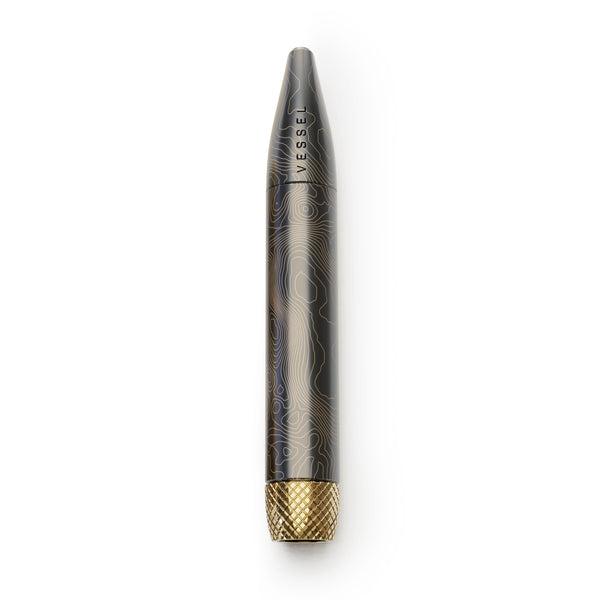
![Vessel - Cone [Onyx] Vessel - Cone [Onyx]](http://www.headshop.com/cdn/shop/products/6f51074a-2173-4ab4-876d-22a84764eb5d.png?v=1679517316&width=600)
![Pipe by Vessel [Rose Gold] Pipe by Vessel [Rose Gold]](http://www.headshop.com/cdn/shop/files/Pipe_Rose_Gold_Closed.jpg?v=1744306576&width=600)
![Vessel - Mill [Beechwood] Vessel - Mill [Beechwood]](http://www.headshop.com/cdn/shop/files/MILL_GUNMETAL_BEECH_COLLAPSED_FRONT_800.jpg?v=1744308513&width=600)
![Vessel Ash [Black] Ultimate Ashtray and Storage - Headshop.com](http://www.headshop.com/cdn/shop/files/96564644-3a7c-45a0-beee-502ebff25cd9_{width}x.jpg?v=1744308327)
![Vessel Ash [Black] Ultimate Ashtray and Storage - Headshop.com](http://www.headshop.com/cdn/shop/files/70b136a5-4745-4c98-8247-e6b2350637ae_{width}x.jpg?v=1744308327)

